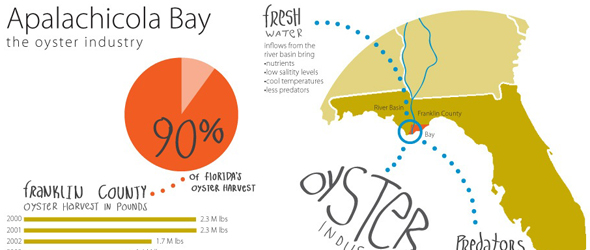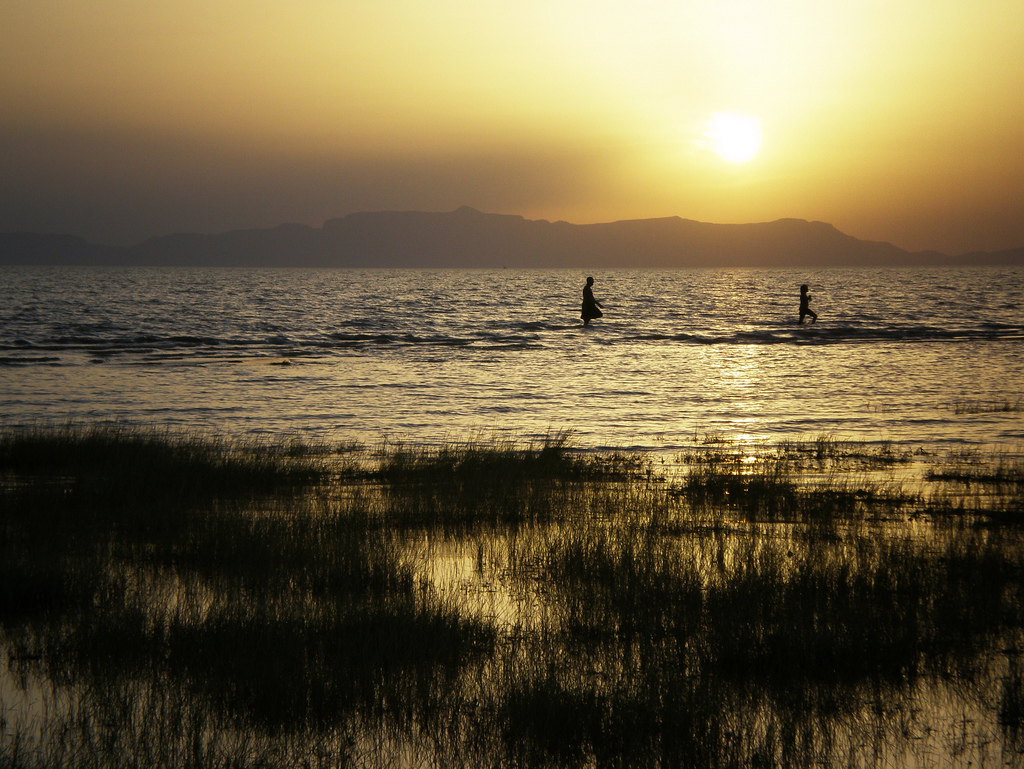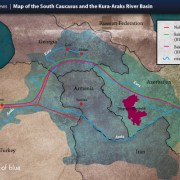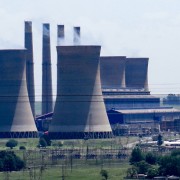Infographic: The Oyster Industry in Florida’s Apalachicola Bay
How do freshwater flows, or lack thereof, affect the marine life downstream?
The drought that set upon the United States this year is affecting marine life and a valuable fishing economy downstream in the Deep South’s Apalachicola-Chattahoochee-Flint River Basin, the most biodiverse river system in North America. When flows from freshwater streams are low, higher salinity levels bring conchs, oyster drills, oyster crabs, and other predators to the Apalachicola Bay. This can translate to decreased oyster numbers in Florida’s Franklin County, which accounts for 90 percent of the state’s oyster harvest. Click the infographic below to learn more.

Alec Aja is an undergraduate student at Grand Valley State University and a Traverse City-based design intern for Circle of Blue. This infographic was made to accompany an article by Circle of Blue’s Alabama reporter, Codi Yeager: Florida Oyster Harvest Suffers As Drought Intensifies Water Battle with Georgia and Alabama. Contact Codi Yeager
Circle of Blue provides relevant, reliable, and actionable on-the-ground information about the world’s resource crises.








Love the infographic, Circle of Blue folks! What does this mean for Florida’s oyster industry with respect to jobs and economy? What percent of the entire U.S. oyster harvest comes from Florida?
Florida accounts for about 10 percent of the total U.S. oyster harvest. The state’s oyster industry is concentrated in the Apalachicola Bay area, where it employs approximately 2,500 people in Franklin County, so it is the local economy that will be hit hardest by oyster declines. Oysters are an important part of Florida’s seafood industry, but the oyster harvest is not the biggest in terms of total pounds, nor is it the most highly valued when compared with the state’s other fishery landings.